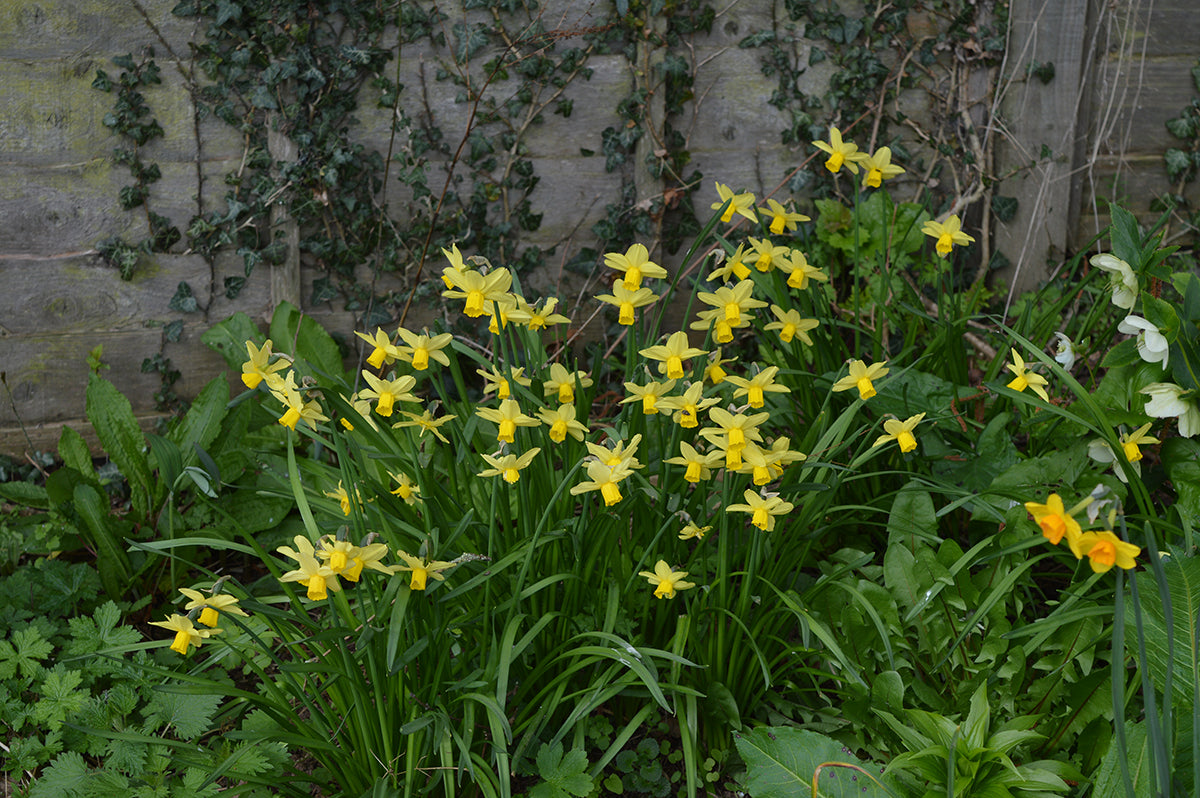Spring without daffodils is not really spring!

Daffodils are the quintessential spring flower. Unlike tulips, they are almost totally reliable in their ability to flower again, year after year, slowly building up their clumps. Older gardens and parks may contain the descendants of bulbs planted over a century ago, their identities long since lost. The number of cultivars raised over the years is something well in excess of 20,000 – of these many are what we have come to expect as 'standard' daffodil, standing 40cms high with big bold trumpets.
Daffodils are however, like dogs, getting smaller. But more slowly, as it takes many years to produce a new variety. Garden centres and bulb merchants are making many more small-growing varieties available, and for many gardeners, not a moment too soon. Ideal for town gardens, window boxes, containers and tight spots, the smaller cultivars are also far more varied than the big ones, with a wider range of shapes, often with multiple flowers on a stalk, and to the delight of many – some have scent. And, another advantage, many are early and very hardy.
They also die away tidily; one of the first lessons new gardeners learn about spring, is that cutting daffodil foliage when green can stop flowering next year; the foliage of small varieties is easily lost amongst rapidly-growing perennials, so this is not a problem. So many are the advantages and delights of small daffodils that many gardeners will find them infinitely collectable, and all too tempting to try more every autumn, the reward to come every spring.







